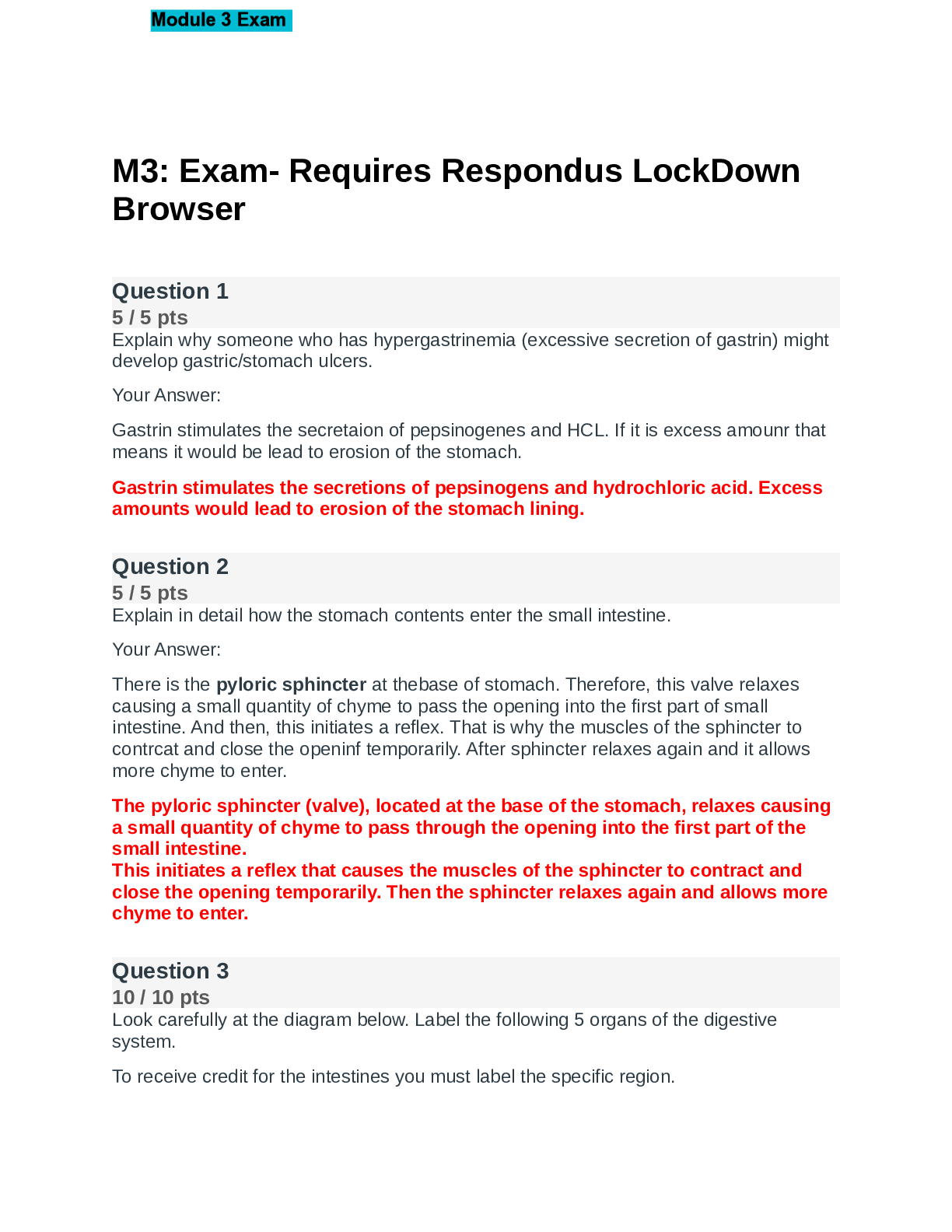Biology > EXAM > Portage Learning BIOD 171/Microbiology Module 3 Exam Questions and Answer Key...Latest 12/2021...A+ (All)
Portage Learning BIOD 171/Microbiology Module 3 Exam Questions and Answer Key...Latest 12/2021...A+
Document Content and Description Below
Portage Learning BIOD 171/Microbiology Module 3 Exam Questions and Answer Key...Latest 12/2021...A+ A nanometer is defined as: - CORRECT ANSWERA. 10-3B. 10-6C.10-9D. 10-12 True or False: A nanom... eteris longer than a micrometer. - CORRECT ANSWERFalse. A nanometer is 1,000 times smaller than a micrometer. Resolution and contrast are two critical factors that influence your ability to see an object. Explain each. - CORRECT ANSWERResolution refers to the distance between two objects at which the objects still can be seen as separate. Poor or low resolution means two (or more) objects may appear as one. Contrast is the difference in light absorbance between two objects. Poor contrast gives a high background and makes the visualization of multiple objects difficult. For instance, trying to identify 2 dark colored objects at night (low light = low contrast) versus the same 2 objects in the middle of a sunny afternoon (bright light against 2 dark objects = high contrast). Assuming a constant (non-adjustable) light source power, identify the part of the microscope you would adjust to limit the amount of light entering the microscope. Select all that apply. A. Objective B. Condenser C. Iris diaphragm D. Eye piece - CORRECT ANSWERC.The iris controls the amount of light that passes through the sample and into the objective lens. Thus, it can be adjusted (opened or closed) to alter the amount of light. What is the total magnification (relative to your eye) of a sample imaged with a 60x objective and a 10x eyepiece? Show your math. - CORRECT ANSWER60 x 10 = 600x magnification True or False: Staining is often required to image a cell that is adherent and flat (thin). - CORRECT ANSWERTrue. Adherent, flat and unstained cells are almost invisible due to the limits on both resolution and contrast. Therefore, cell staining is often required to adequately image the sample. Which of the following could NOT be seen clearly by the unaided eye? Select all that apply. A. Bacteria with diameter of 24 μm B. Protozoa with diameter of 150 μm C. Virus with a diameter of 0.2 μm D. Skin cell with diameter of 1500 μm - CORRECT ANSWERA and C. The unaided eye can, on average, clearly resolve objects > 100 μm Label the following unmarked microscope components (numbered arrows) by matching it with the components provided (letters). A. Stage B. Fine Adjustment Knob C. Iris Diaphragm D. Neck E. Condenser Lens F. Eyepiece G. Objective H. Base I. Coaxial Controls - CORRECT ANSWER1F 2D 3B 4G 5A 6H1. This type of microscope utilizes ultraviolet (UV) light to illuminate stained objects. - CORRECT ANSWERFluorescence This type of microscope uses a specialized condenser and objective to amplify the slight differences between cells and background. - CORRECT ANSWERPhase-Contrast This type of microscope enhances contrast between specimen and background but does not permit the visualization of intracellular structures. - CORRECT ANSWERDark Field This type of microscope uses neither halogen nor UV light sources but rather lasers to illuminate stained cells in high resolution. - CORRECT ANSWERConfocal Identify what type of electron microscope was used to capture the following image and explain your choice. SEE PICTURE - CORRECT ANSWERThe above image is captured via a Transmission Electron Microscope (TEM). Even at 20nm resolution (inset image), subcellular substructures are still visible. The image lacks the outside 'shell' only appearance of SEM. Gram-Positive cells appear _______ in color due to a ______ peptidoglycan layer in the cell wall. - CORRECT ANSWERPurple; Thick Gram-Negative cells appear _______ in color due to a ______ peptidoglycan layer in the cell wall. - CORRECT ANSWERPink; Thin True or False: Following the decolorization step of the Gram stain, Gram-Negative bacteria will appear colorless. - CORRECT ANSWERTrue. Even together, the LPS and thin peptidoglycan layer are unable to retain the crystal violet dye during decolorization. Name one substance capable of chemically fixing cells to a slide. - CORRECT ANSWERAny of the following are true: Paraformaldehyde, ethanol or methanol. You want to observe the size and shape of a cell. What is the easiest staining technique that you could perform? Name at least one dye you would use during this process. - CORRECT ANSWERSimple stain. You could use any of the following: methylene blue, crystal violet, safranin or fuschin. You suspect a patient may have TB. Once a sample has been obtained it is sent off to the lab for an acid-fast stain. If the patient were infected with TB, describe what you would expect to see on the stained slide. - CORRECT ANSWERYou would expect to see red cells (TB+) on a blue background (TB negative). True or False: If a patient is suspected of having malaria, a Giemsa stain would be an appropriate differential test to perform. - CORRECT ANSWERTrue. Giemsa stains are often used in the cl [Show More]
Last updated: 1 year ago
Preview 1 out of 19 pages
Instant download
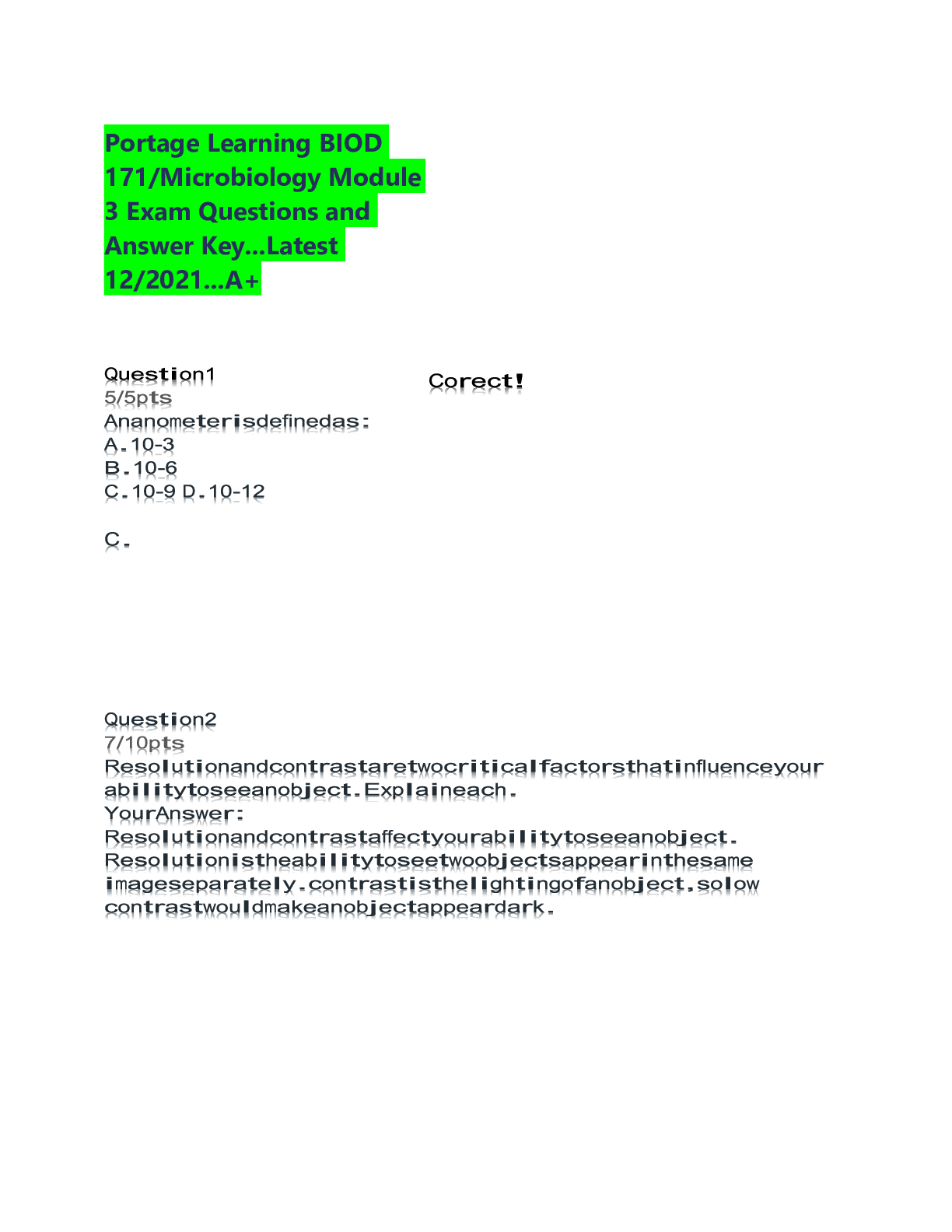
Buy this document to get the full access instantly
Instant Download Access after purchase
Add to cartInstant download
Reviews( 0 )
Document information
Connected school, study & course
About the document
Uploaded On
Aug 09, 2022
Number of pages
19
Written in
Additional information
This document has been written for:
Uploaded
Aug 09, 2022
Downloads
0
Views
81


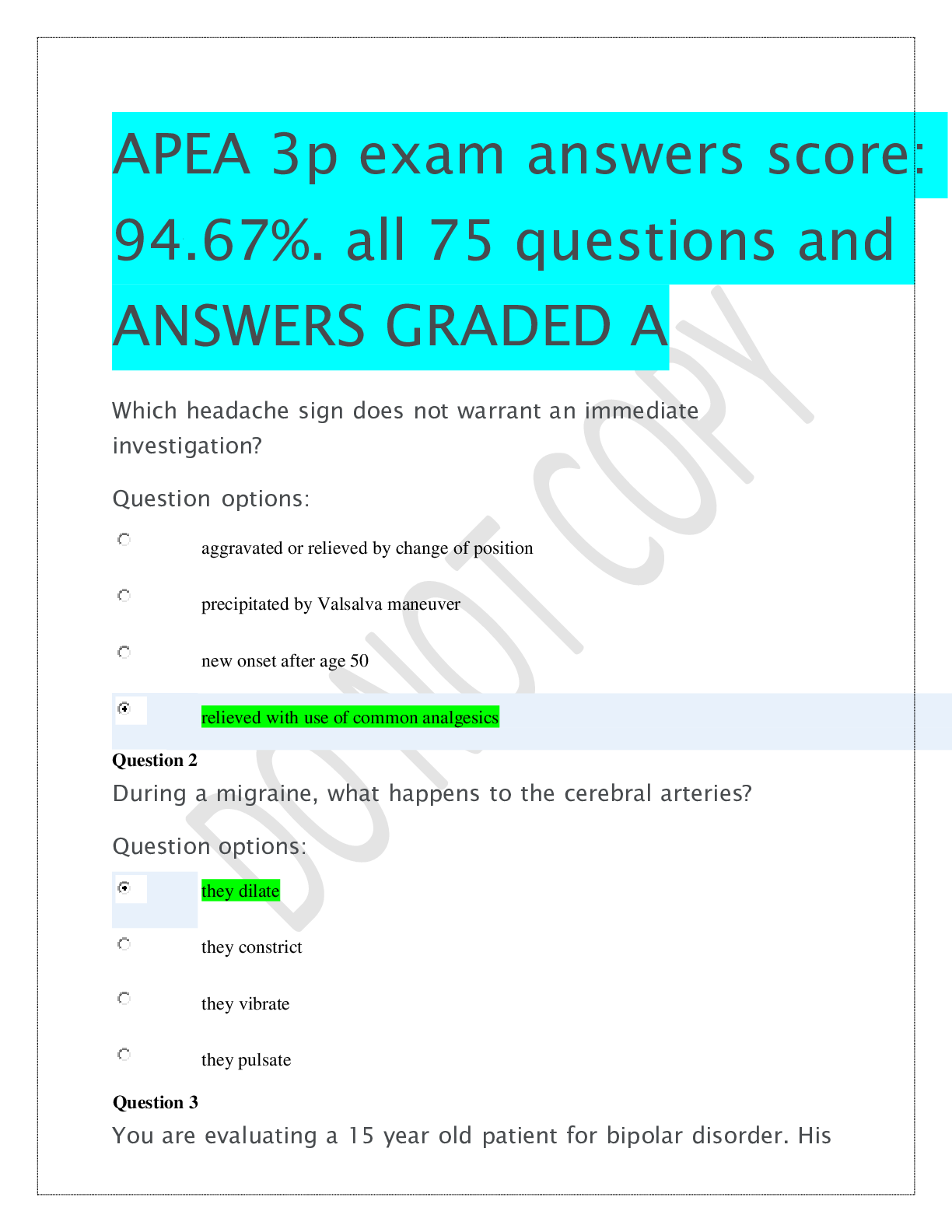


.png)
.png)


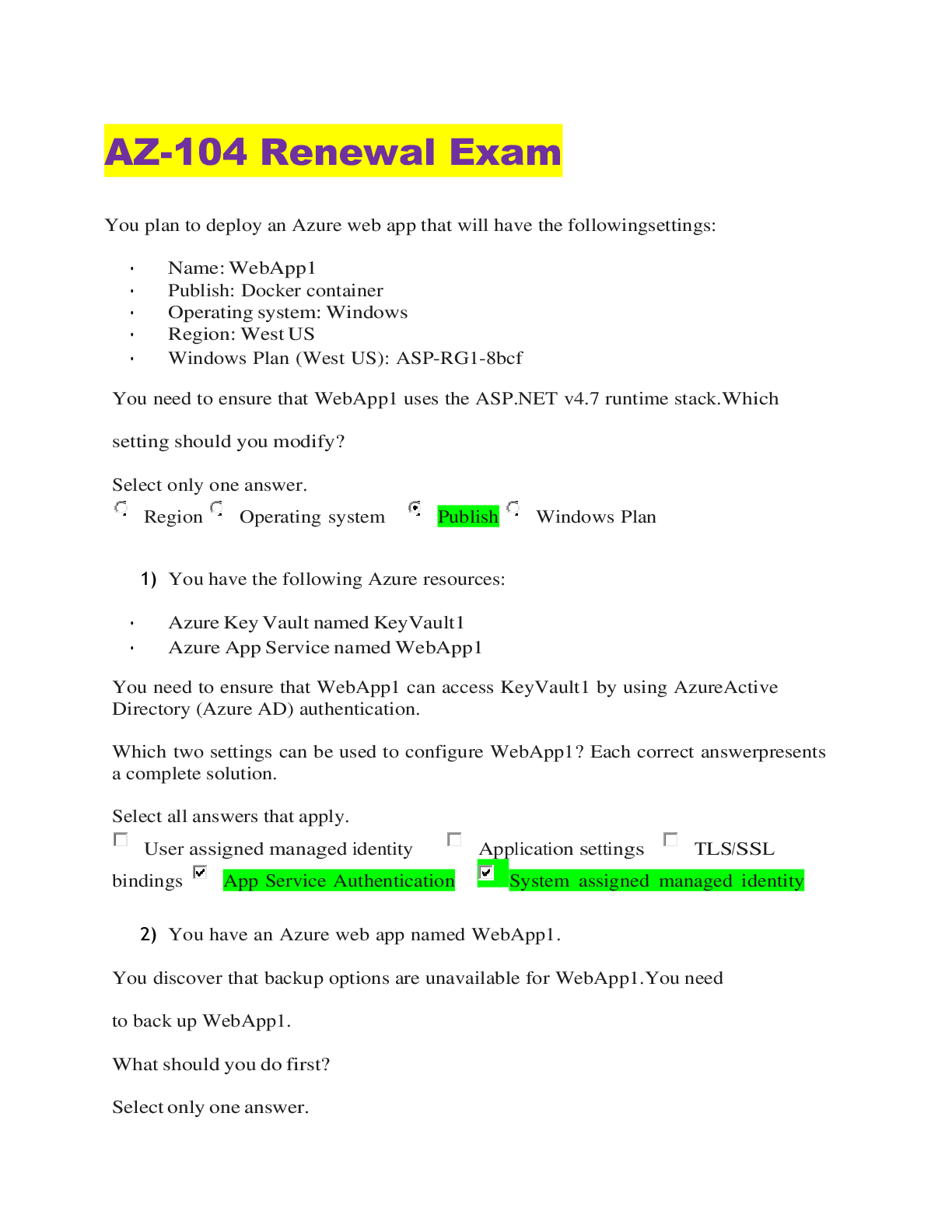
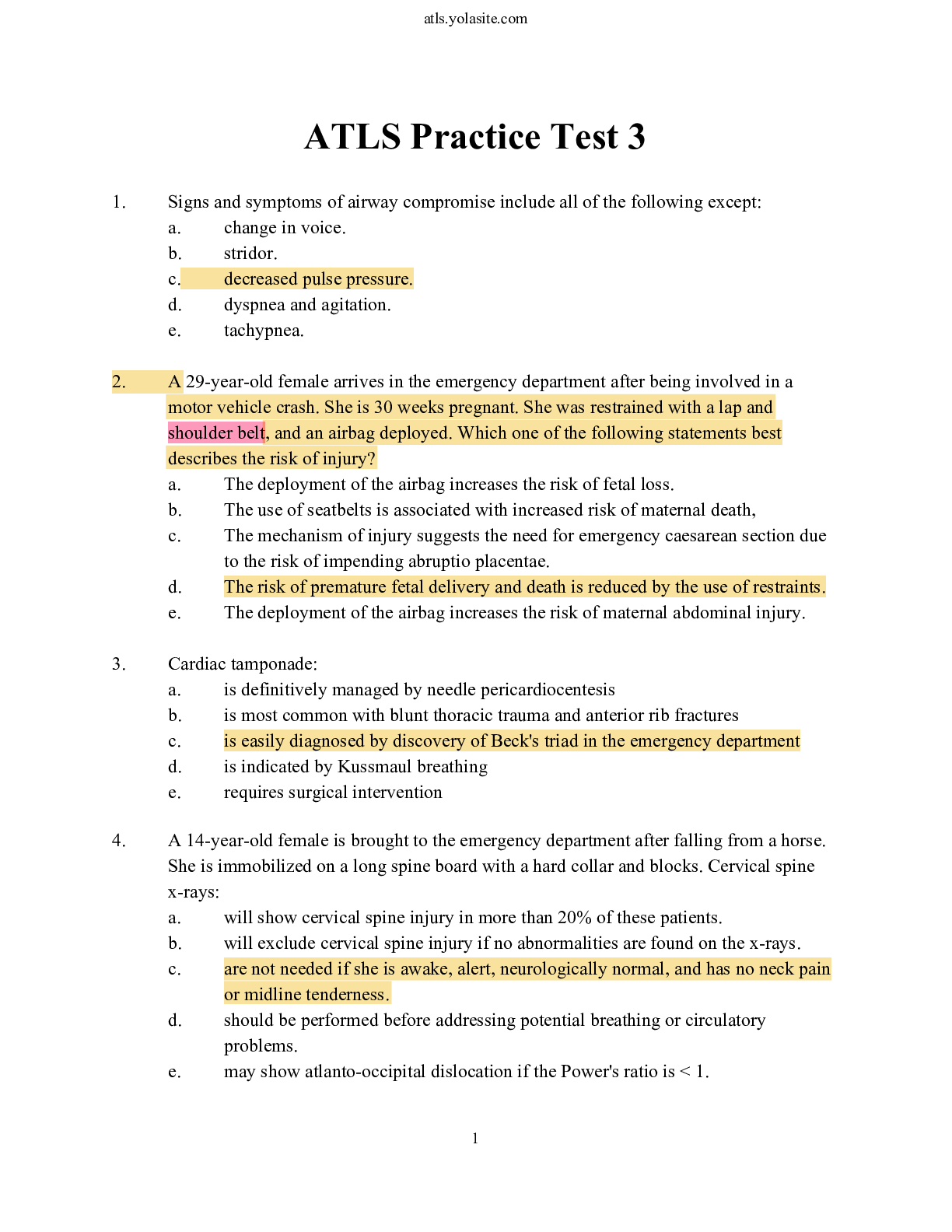


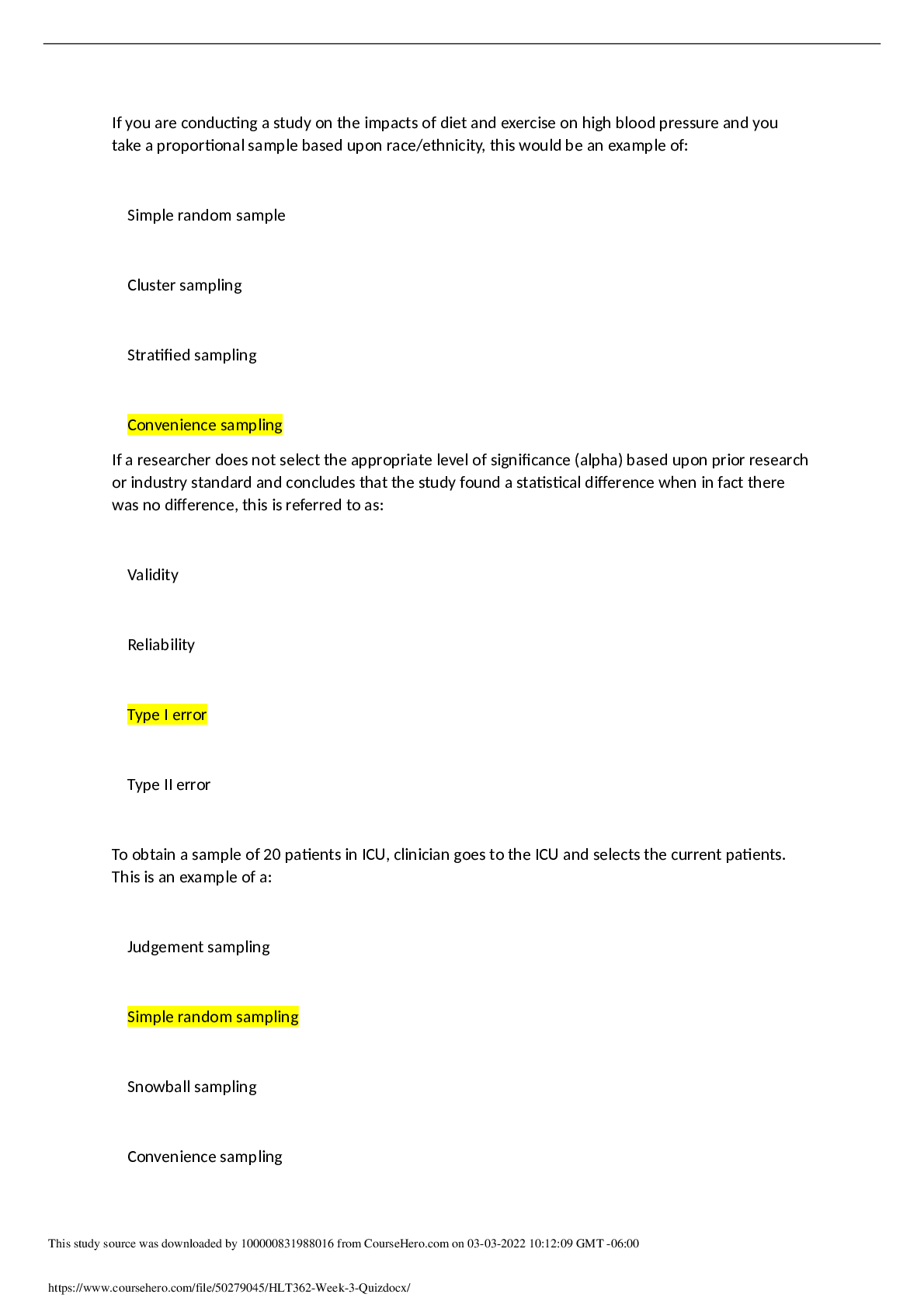
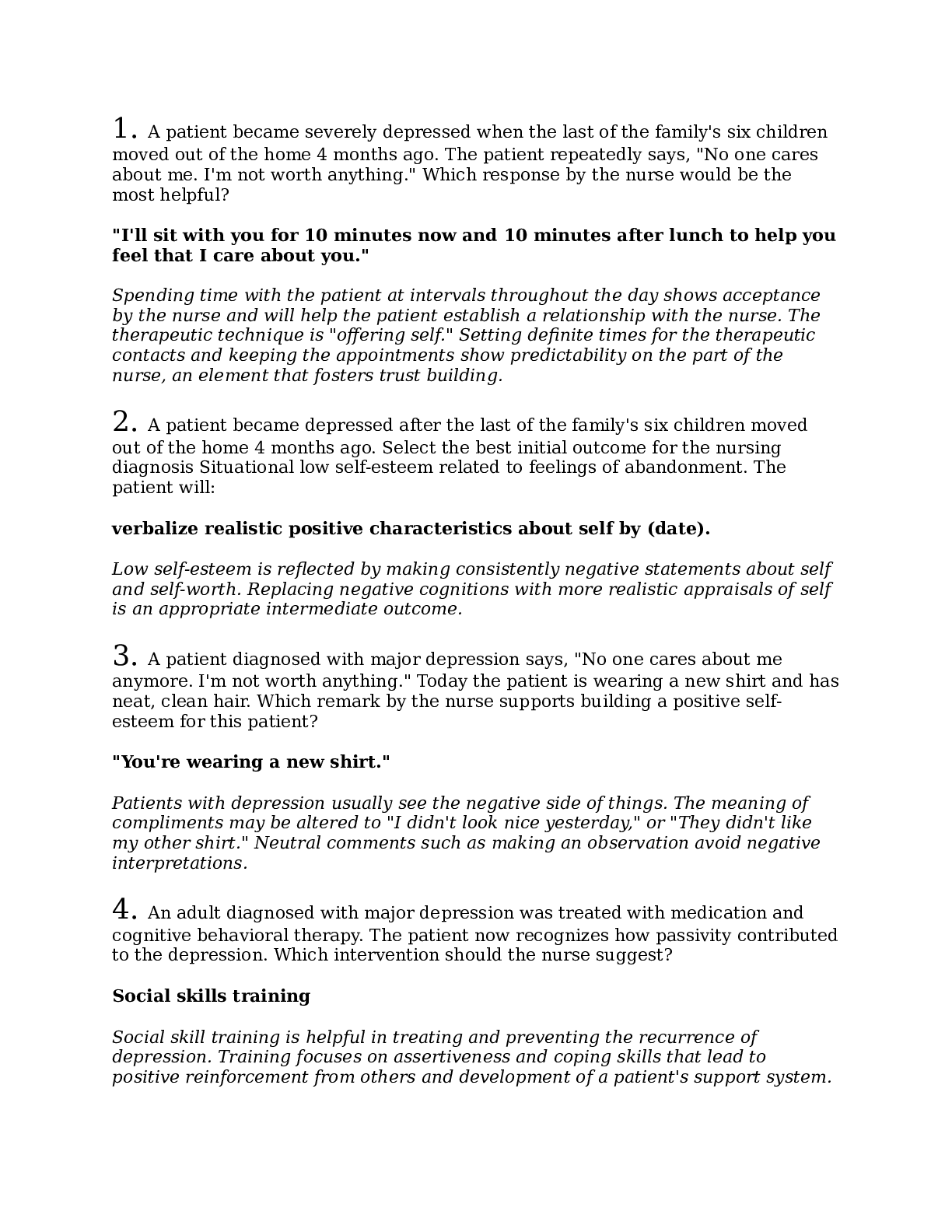
 (1).png)


